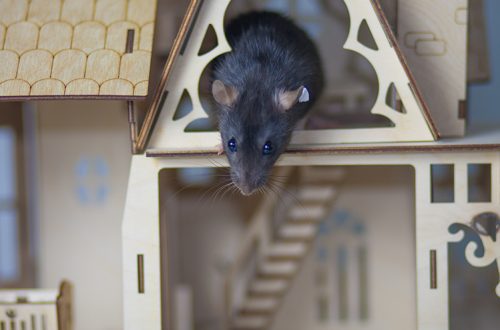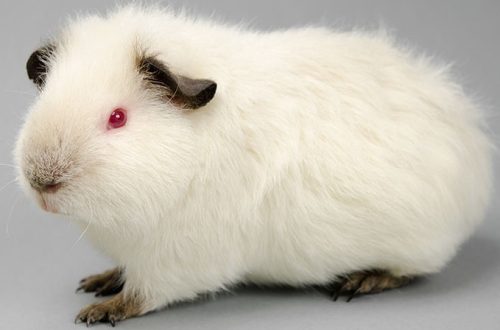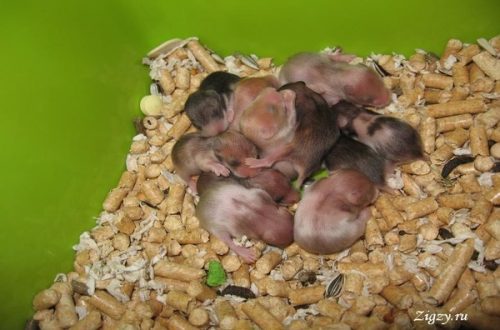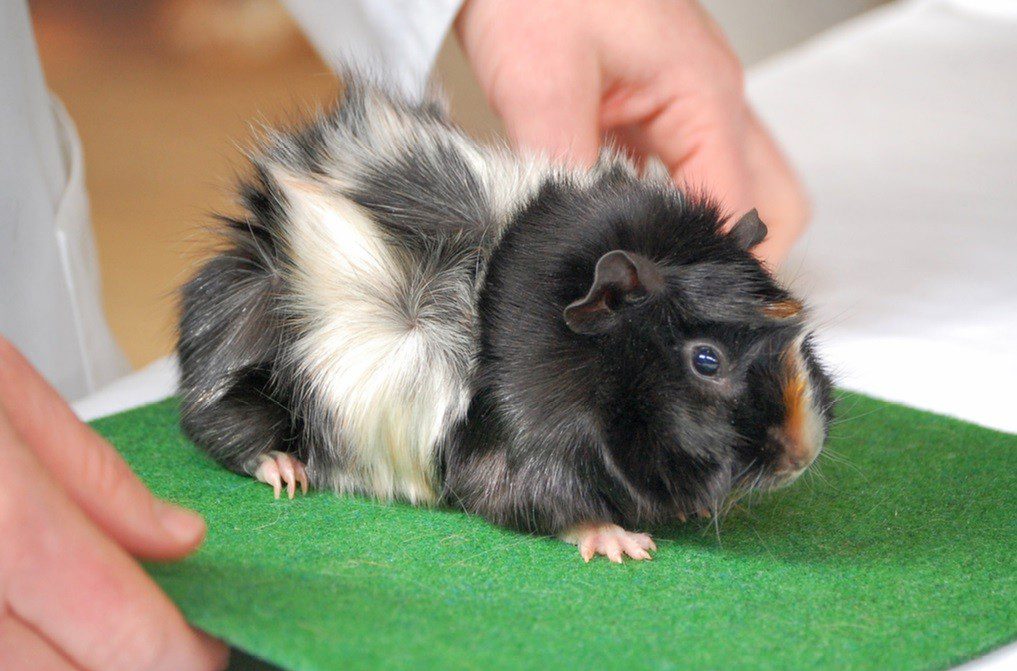
Nā pilikia o ka hānau ʻana o nā puaʻa guinea
Almost every family knows firsthand what a guinea pig is. All of us at least once were at the bird market and had the opportunity to observe a huge number of cages, terrariums with “angora”, “rosette” and other supposedly thoroughbred guinea pigs. An ordinary buyer does not understand the breeds and often overpays for his ignorance.
Almost any passer-by stopped on the street will list at least several breeds of dogs, perhaps remember one or two breeds of cats, but is unlikely to name at least one breed of guinea pigs. Therefore, animals bought on the market can often be attributed only to the so-called “noble” breed. As a rule, in order to continue the family of a beloved pet, another “pedigreed” pig is acquired, and the criteria for selecting a pair are usually only the external signs (phenotype) of the selected pig. And, the stronger the candidate for the acquisition will be different from the “marriageable” pig, the more likely it is that such a pig will be bought.
The most popular among buyers, especially among children, are animals with hair sticking out in all directions of different lengths. That is why the poultry market has the most “rosette” or “angora” pigs, in other words, mestizos, which are in high demand and low cost. After all, in order to obtain “non-born” rodents, it is not at all necessary to acquire high-breed producers, monitor inbreeding and the purity of bred lines. You can simply bandage together all the available pigs, despite the fact that many of them may be relatives.
Currently, merchants dealing with pedigreed pigs are appearing, who are trying to improve the quality of their goods, as the buyer begins to navigate the breeds, appreciate the exterior of the animal. These people can be called breeders, but there are only a few of them. Real breeders are mostly altruists, since their main goal is to improve the quality of Russian pigs, and most often the most promising and expensive specimens of animals do not go on sale, but remain in the nursery for further breeding. Professional breeders almost never sell pigs to stores, to the bird market, but try to track the fate of their pets’ offspring. In such cases, the “pig business” does not pay off, but brings aesthetic, professional pleasure.
Purebred pigs are also found in pet stores. True, the price for them is quite high, and the conditions of detention often leave much to be desired. Most sellers cannot accurately determine the sex of the animal, so if both sexes are kept together, there is a possibility of acquiring an already pregnant female.
Animals from the store or from the market are often sick. People who make money on this try to get as many litters of pigs per year as possible, not allowing weakened females to rest after giving birth. The first pregnancy often occurs before the mumps reaches the recommended age for full, healthy offspring. Of course, some breeders-owners of nurseries also sin with this, but, fortunately, this does not happen often.
Few people know that in Russia there have long been clubs of breed lovers and nurseries. There are simply amateurs who are fond of breeding any breed of guinea pigs. Exhibitions are regularly held to which experts from other countries are invited. And although not all breeds are officially recognized in Russia, their range in our country is quite wide. Here is some of them:
ABYSSINIAN
The first pigs of this breed appeared in England in 1861 as a result of a mutation in the wool gene. The first copies were brought to Europe in 1886. They differ from ordinary smooth-haired pigs in a somewhat elongated hard and elastic coat, not exceeding 3,5 cm in length, and in a large number of rosettes located in a certain order throughout the body of the pig and forming ridges. The total number of rosettes can vary from 10 to 12. The pig should have a good collar around the shoulders and pronounced sideburns.
Almost every family knows firsthand what a guinea pig is. All of us at least once were at the bird market and had the opportunity to observe a huge number of cages, terrariums with “angora”, “rosette” and other supposedly thoroughbred guinea pigs. An ordinary buyer does not understand the breeds and often overpays for his ignorance.
Almost any passer-by stopped on the street will list at least several breeds of dogs, perhaps remember one or two breeds of cats, but is unlikely to name at least one breed of guinea pigs. Therefore, animals bought on the market can often be attributed only to the so-called “noble” breed. As a rule, in order to continue the family of a beloved pet, another “pedigreed” pig is acquired, and the criteria for selecting a pair are usually only the external signs (phenotype) of the selected pig. And, the stronger the candidate for the acquisition will be different from the “marriageable” pig, the more likely it is that such a pig will be bought.
The most popular among buyers, especially among children, are animals with hair sticking out in all directions of different lengths. That is why the poultry market has the most “rosette” or “angora” pigs, in other words, mestizos, which are in high demand and low cost. After all, in order to obtain “non-born” rodents, it is not at all necessary to acquire high-breed producers, monitor inbreeding and the purity of bred lines. You can simply bandage together all the available pigs, despite the fact that many of them may be relatives.
Currently, merchants dealing with pedigreed pigs are appearing, who are trying to improve the quality of their goods, as the buyer begins to navigate the breeds, appreciate the exterior of the animal. These people can be called breeders, but there are only a few of them. Real breeders are mostly altruists, since their main goal is to improve the quality of Russian pigs, and most often the most promising and expensive specimens of animals do not go on sale, but remain in the nursery for further breeding. Professional breeders almost never sell pigs to stores, to the bird market, but try to track the fate of their pets’ offspring. In such cases, the “pig business” does not pay off, but brings aesthetic, professional pleasure.
Purebred pigs are also found in pet stores. True, the price for them is quite high, and the conditions of detention often leave much to be desired. Most sellers cannot accurately determine the sex of the animal, so if both sexes are kept together, there is a possibility of acquiring an already pregnant female.
Animals from the store or from the market are often sick. People who make money on this try to get as many litters of pigs per year as possible, not allowing weakened females to rest after giving birth. The first pregnancy often occurs before the mumps reaches the recommended age for full, healthy offspring. Of course, some breeders-owners of nurseries also sin with this, but, fortunately, this does not happen often.
Few people know that in Russia there have long been clubs of breed lovers and nurseries. There are simply amateurs who are fond of breeding any breed of guinea pigs. Exhibitions are regularly held to which experts from other countries are invited. And although not all breeds are officially recognized in Russia, their range in our country is quite wide. Here is some of them:
ABYSSINIAN
The first pigs of this breed appeared in England in 1861 as a result of a mutation in the wool gene. The first copies were brought to Europe in 1886. They differ from ordinary smooth-haired pigs in a somewhat elongated hard and elastic coat, not exceeding 3,5 cm in length, and in a large number of rosettes located in a certain order throughout the body of the pig and forming ridges. The total number of rosettes can vary from 10 to 12. The pig should have a good collar around the shoulders and pronounced sideburns.
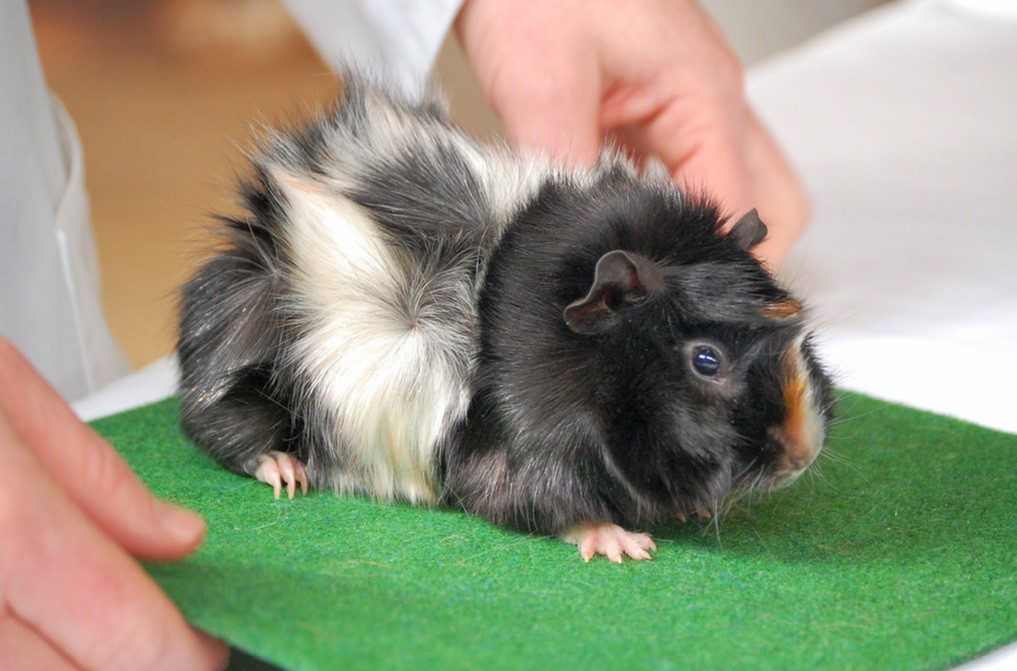
PERUAN
The breed has been known in Europe since the middle of the 50th century. Peruvian pigs have long, straight hair growing towards the head from two rosettes located on the sacrum and falling down from a parting on the back, running along the spine. In show class pigs, the hair length can reach XNUMX cm. Good indicators of the breed are: the absence of extra rosettes, the so-called “tucks” (when the wool changes its direction in a small area), a comb. Brightness and a clear border of colors, pronounced sideburns are valued
PERUAN
The breed has been known in Europe since the middle of the 50th century. Peruvian pigs have long, straight hair growing towards the head from two rosettes located on the sacrum and falling down from a parting on the back, running along the spine. In show class pigs, the hair length can reach XNUMX cm. Good indicators of the breed are: the absence of extra rosettes, the so-called “tucks” (when the wool changes its direction in a small area), a comb. Brightness and a clear border of colors, pronounced sideburns are valued
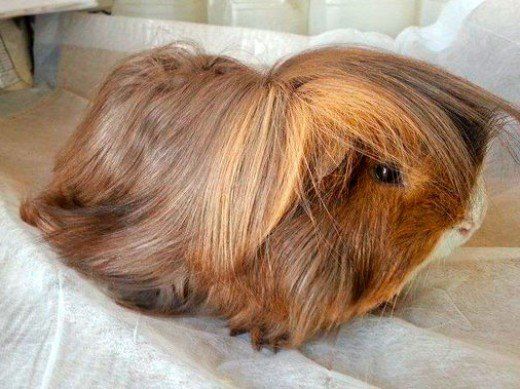
ALPACY
They differ from the Peruvian only in wavy hair.
ALPACY
They differ from the Peruvian only in wavy hair.
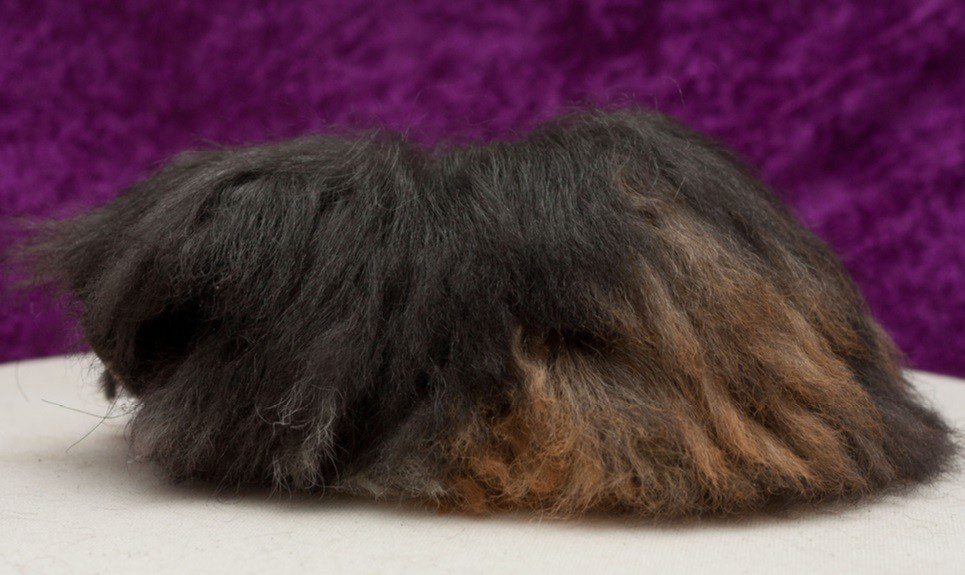
ʻO Seltie
Shelties were recognized in England in 1973. In the USA – in 1980. Unlike the above breeds, Shelties do not have rosettes. Long fine hair, forming a mane, passing from the head to the body, is soft and silky. On the muzzle, the hair remains short. Tanks directed forward should be well defined. Newborn babies have short hair, and only an experienced breeder will be able to distinguish a Sheltie from another breed at this age.
ʻO Seltie
Shelties were recognized in England in 1973. In the USA – in 1980. Unlike the above breeds, Shelties do not have rosettes. Long fine hair, forming a mane, passing from the head to the body, is soft and silky. On the muzzle, the hair remains short. Tanks directed forward should be well defined. Newborn babies have short hair, and only an experienced breeder will be able to distinguish a Sheltie from another breed at this age.
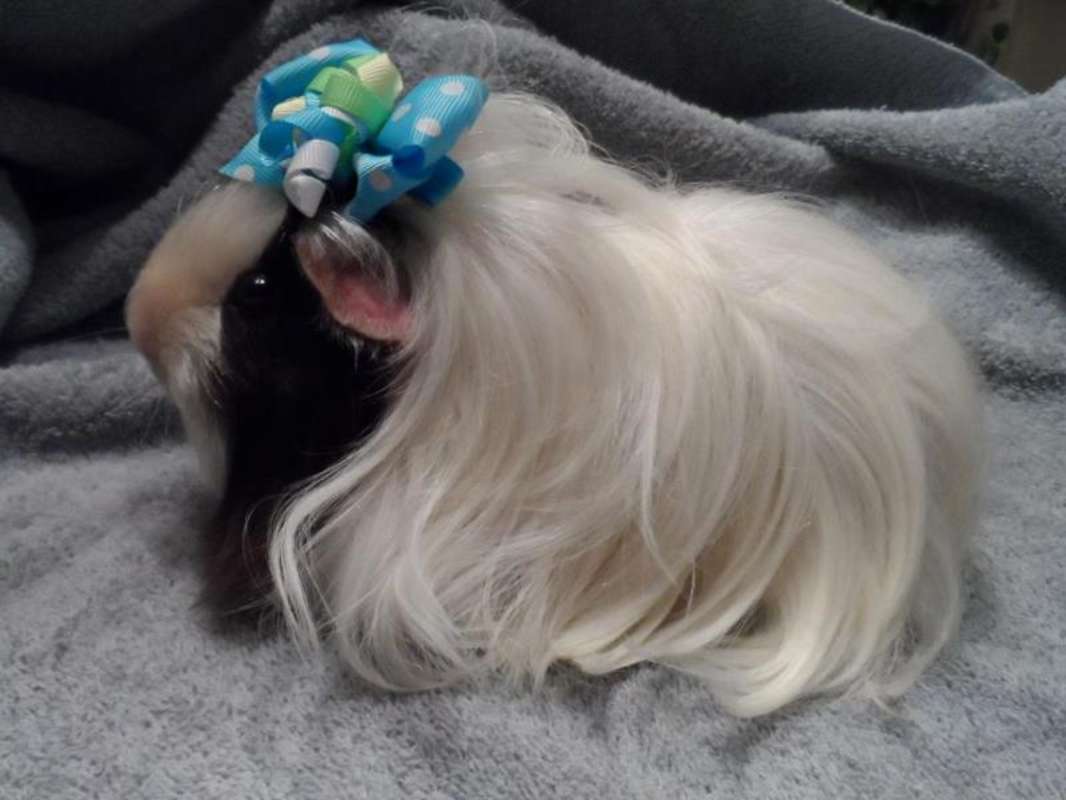
CORONETS
The same Shelties, but with a rosette on the crown, forming a “crown”.
CORONETS
The same Shelties, but with a rosette on the crown, forming a “crown”.
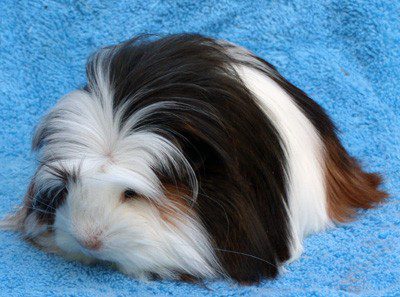
TEXELLI
External data, like a Sheltie, with the exception of wavy, curly, soft and elastic to the touch coat. Curls should be spiral, well defined, and the more of them, the better.
TEXELLI
External data, like a Sheltie, with the exception of wavy, curly, soft and elastic to the touch coat. Curls should be spiral, well defined, and the more of them, the better.
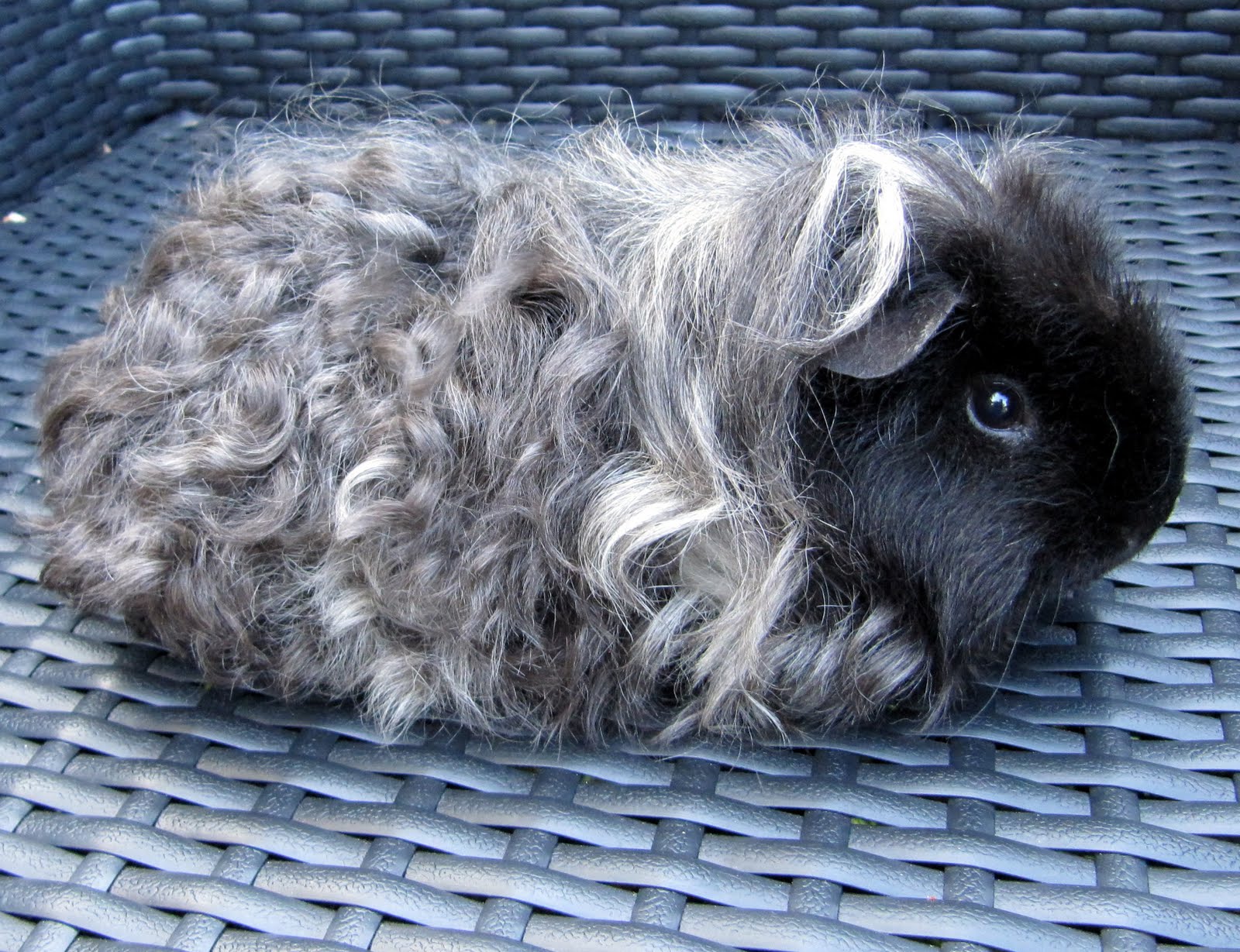
AGUTY
Agoutis are smooth-coated pigs with a complex coloration similar to wild pigs. Each hair of the cover is divided into 3 parts by color. The color of the coat on the belly corresponds to the color of one part of the hairs of the integument and contrasts with the general tone of the mumps, specks are excluded. There are six types of agouti colors: lemon silver, golden, chocolate, cream and cinnamon agouti.
AGUTY
Agoutis are smooth-coated pigs with a complex coloration similar to wild pigs. Each hair of the cover is divided into 3 parts by color. The color of the coat on the belly corresponds to the color of one part of the hairs of the integument and contrasts with the general tone of the mumps, specks are excluded. There are six types of agouti colors: lemon silver, golden, chocolate, cream and cinnamon agouti.
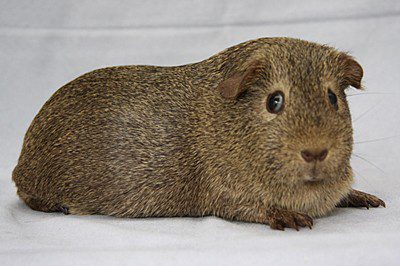
KANAKA
Smooth-haired guinea pigs with a solid (solid) body color. There are several color variations allowed in this breed – black, white, cream, gold, red, buff and others. Moreover, each color must match the color of the eyes and skin.
KANAKA
Smooth-haired guinea pigs with a solid (solid) body color. There are several color variations allowed in this breed – black, white, cream, gold, red, buff and others. Moreover, each color must match the color of the eyes and skin.
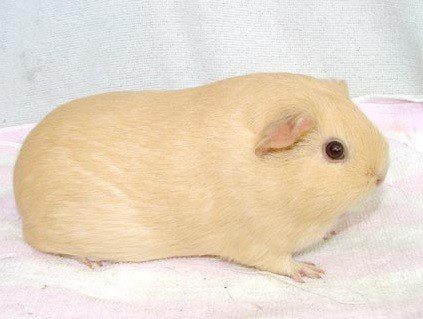
CRESTEDS
Smooth-haired pigs with a rosette on the crown. There are English and American Cresteds. In English Cresteds, the color of the rosette should be identical to the color of the main color, in American Cresteds – in contrast with it.
CRESTEDS
Smooth-haired pigs with a rosette on the crown. There are English and American Cresteds. In English Cresteds, the color of the rosette should be identical to the color of the main color, in American Cresteds – in contrast with it.
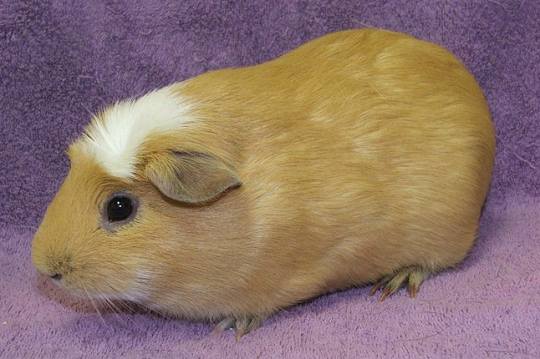
SATIN PIGS
The secret of their beauty lies in their extraordinary soft silky coat, which shines and shimmers due to the special hollow structure of the hair (each hair has a hollow axis, from root to tip, due to which light easily penetrates through it, which makes the coat unusually shiny). Satin pigs are found among almost the entire variety of breeds.
SATIN PIGS
The secret of their beauty lies in their extraordinary soft silky coat, which shines and shimmers due to the special hollow structure of the hair (each hair has a hollow axis, from root to tip, due to which light easily penetrates through it, which makes the coat unusually shiny). Satin pigs are found among almost the entire variety of breeds.
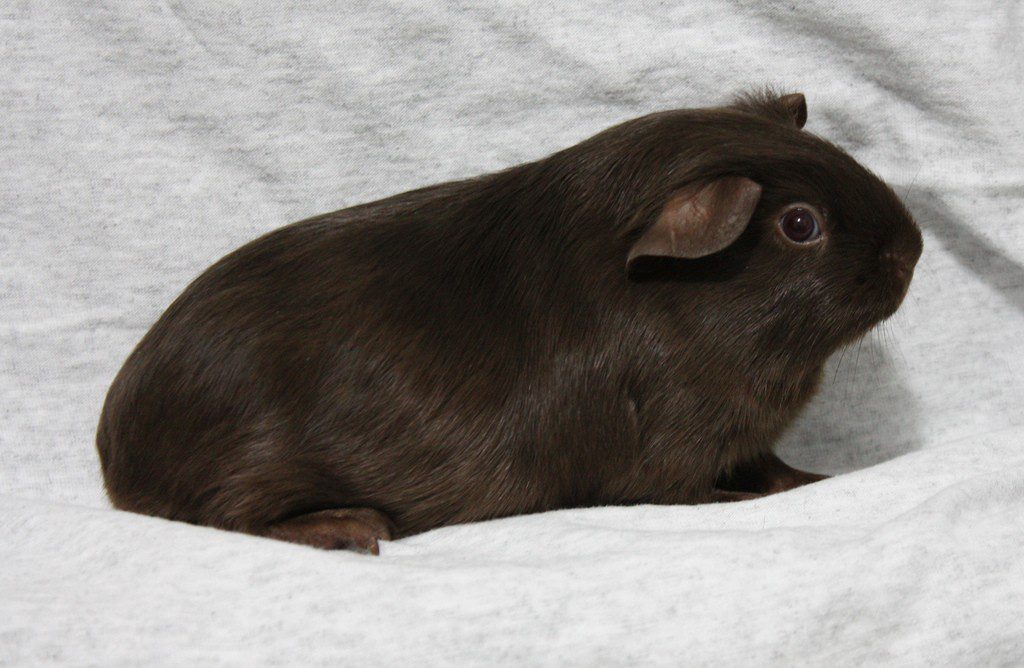
Of the rare, I would like to note TANOV (SING)
In the color of pigs of this breed there are two colors. One is the main one (it can be beige, lilac, slate, chocolate and black.) The other is tan of a certain pattern, which should be lighter than the main color. According to the coloring of Tans, it can be compared with the color of Doberman dogs.
Of the rare, I would like to note TANOV (SING)
In the color of pigs of this breed there are two colors. One is the main one (it can be beige, lilac, slate, chocolate and black.) The other is tan of a certain pattern, which should be lighter than the main color. According to the coloring of Tans, it can be compared with the color of Doberman dogs.
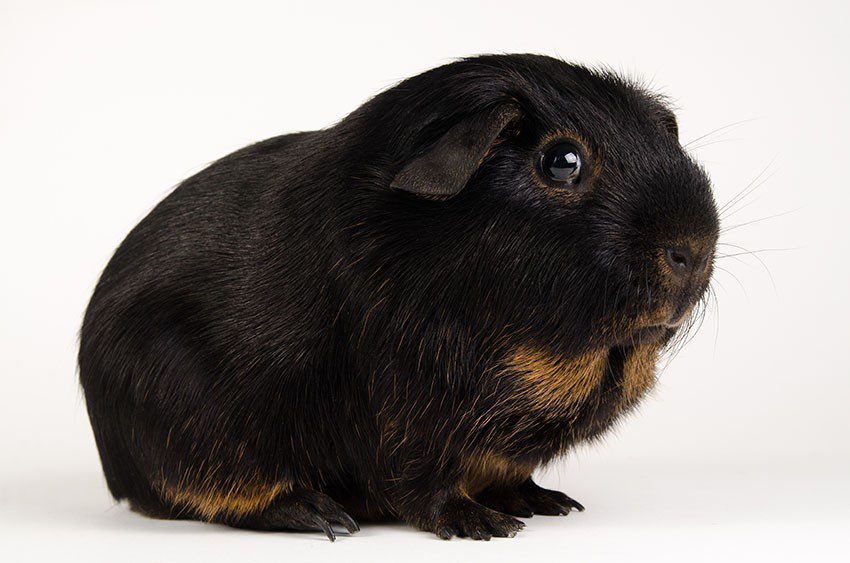
I want to add that this is just a small fraction of the wide variety of breeds and variations of guinea pigs. All of them have differences, but there are several features common to all known breeds. One of the indicators of the quality of a guinea pig is its recumbent ears, which should not have pockets, creases and resemble a rose petal in shape. Large, slightly bulging eyes, a “Roman” profile of a short, blunt muzzle are welcome. Mumps should not lag behind in development, be fat or thin. When buying a rodent from a nursery, the chances of acquiring a healthy thoroughbred animal with a pedigree and getting professional advice on maintenance and care increase.
© Ua hoʻomākaukau ʻia ka ʻatikala e Yu.M. ʻO Topalova, ka mea nona ka puaʻa puaʻa Pigsea Star
I want to add that this is just a small fraction of the wide variety of breeds and variations of guinea pigs. All of them have differences, but there are several features common to all known breeds. One of the indicators of the quality of a guinea pig is its recumbent ears, which should not have pockets, creases and resemble a rose petal in shape. Large, slightly bulging eyes, a “Roman” profile of a short, blunt muzzle are welcome. Mumps should not lag behind in development, be fat or thin. When buying a rodent from a nursery, the chances of acquiring a healthy thoroughbred animal with a pedigree and getting professional advice on maintenance and care increase.
© Ua hoʻomākaukau ʻia ka ʻatikala e Yu.M. ʻO Topalova, ka mea nona ka puaʻa puaʻa Pigsea Star



